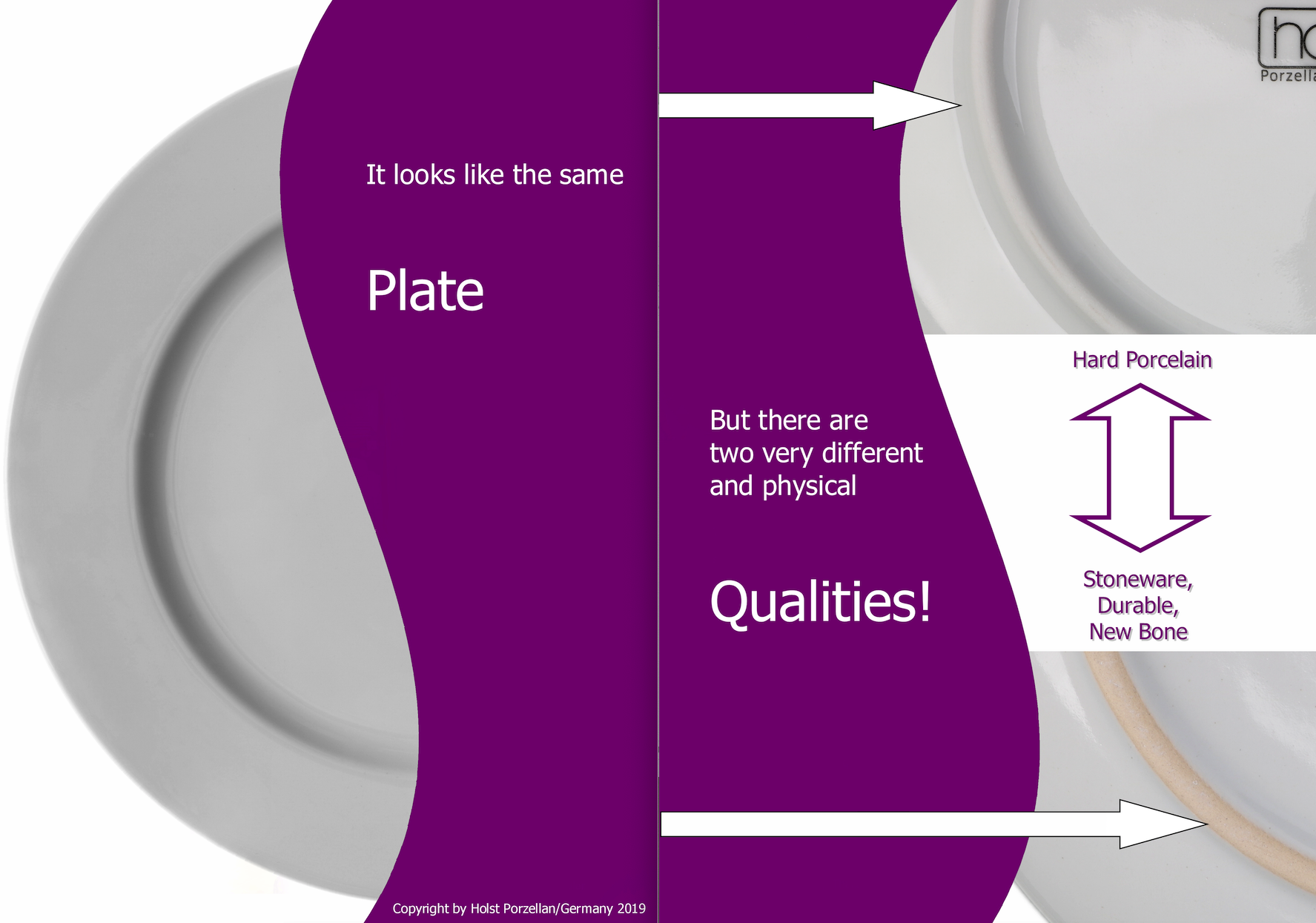Characteristics
Properties & characteristics of porcelain and ceramics
The layman can hardly see the differences between real feltspar porcelain and other kinds of tableware in different ceramic materials. Seen from above, the ceramic plate looks absolutely same like porcelain. There are no visible differences on the glazed surfaces. Only the trained eye looks for the difference on the unglazed parts of the item. If the white of the glaze resembles the white of the unglazed base ring, it is most certainly porcelain. If the white of the unglazed base ring differs from the white of the glaze - here in the picture yellowish - it is definitely not porcelain!
Ceramic masses differ in different compositions of clay minerals, feldspars and quartzes. These clay minerals can be classified according to various criteria and assigned a characteristic colouring of the body colour.
- Porcelain is white and dense
- Earthenware is white and porous
- Stoneware is coloured and dense
- Earthenware is coloured and porous
The "types of porcelain and ceramics" described in our product information refer to the technical, i.e. the scientific, chemical and physical differences between the various types of porcelain and ceramics. This specialist knowledge from materials science, chemistry and physics are important components, especially for application advice, which apply arbitrarily and very differently to the goods offered on the market. Hundreds of different factors lead to very different results and characteristics of a tableware.
The different composition of raw materials, extremely different manufacturing processes, different firing methods and firing temperatures are the main reasons for different values and application properties for the consumer and end user. Very few customers are aware of this - until they suffer damage for the first time! A comparison with "beer" illustrates this fact. If you place 10 types of pale beer next to each other, all 10 types look pretty much the same. However, alcohol content, digestibility, taste and quality are very different. It is the same with porcelain!
The subordinate pages in this section are intended to help to filter out from the characteristics of the different types of porcelain and ceramics the benefits important for the consumer.

